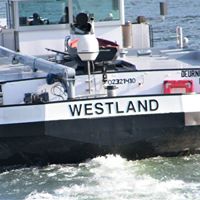What term is used to describe a boats hull that is constructed using overlapping planks?
Clinker built (also known as lapstrake) is a method of boat building where the edges of hull planks overlap, called a "land" or "landing." In craft of any size shorter planks can be joined end to end into a longer strake or hull plank. The technique developed in northern Europe and was successfully used by the Vikings and typical for the Hanseatic cog. A contrasting method, where plank edges are butted smoothly seam to seam, is known as carvel construction.
Examples of clinker-built boats directly descended from those of Viking shipbuilders are the traditional round-bottomed Thames skiffs of the River Thames, and the larger (originally) cargo-carrying Norfolk wherries of England.
The technique of clinker developed in the Nordic (Germanic) shipbuilding tradition as distinct from the Mediterranean mortise and tenon planking technique which was introduced to the provinces of the north in the wake of Roman expansion. Overlapping seams already appear in the 4th century BC Hjortspring boat. The oldest evidence for a clinker-built vessel, dendrochronologically dated to 190 AD, are boat fragments which were found in recent excavations at the site of the famous Nydam Boat. The Nydam Boat itself, built ca. 320 AD, is the oldest preserved clinker-built boat. Clinker-built ships were a trademark of Nordic navigation throughout the Middle Ages, particularly of the longships of the Viking explorers and the trading cogs of the Hanseatic League.
More Info:
en.wikipedia.org













